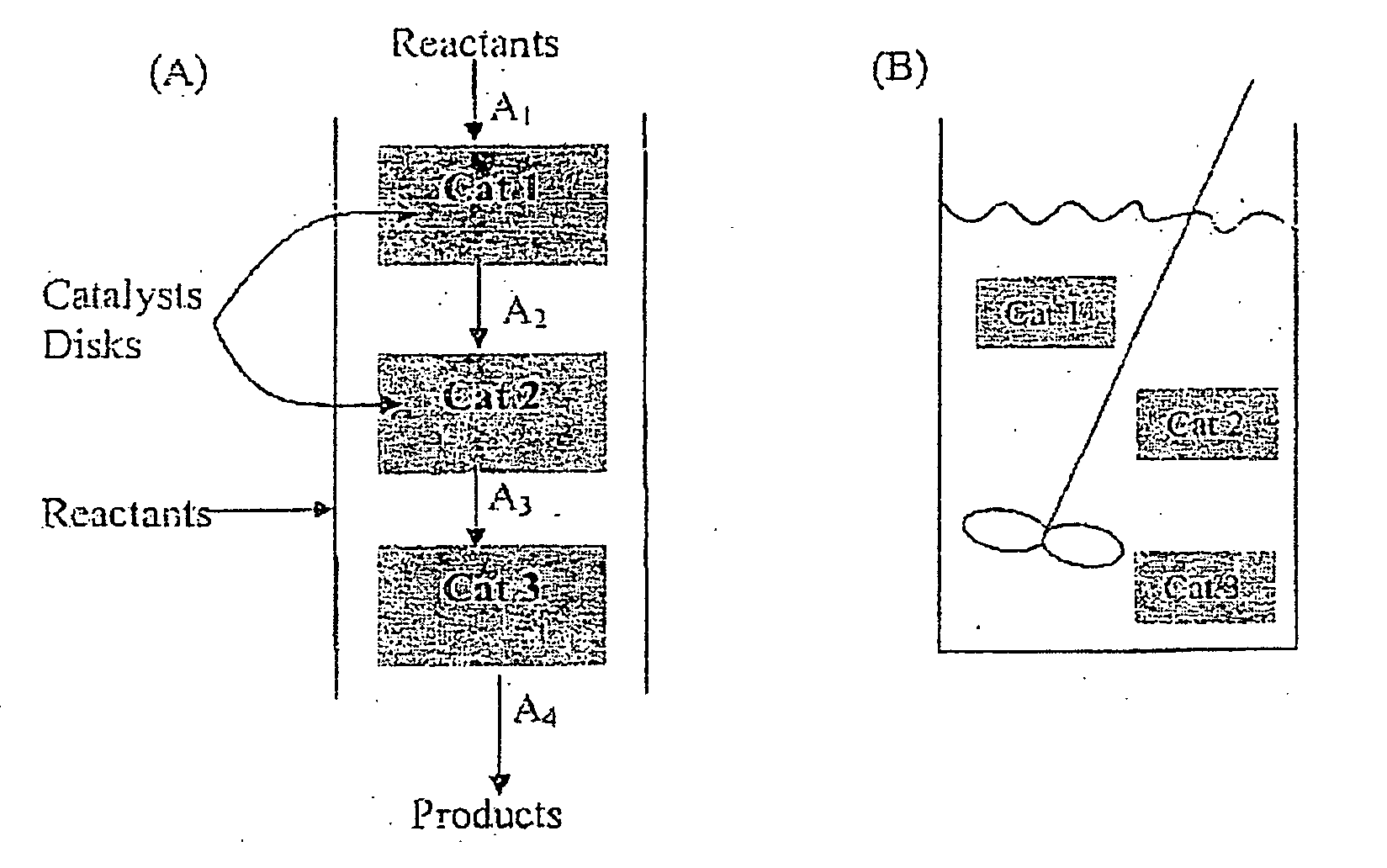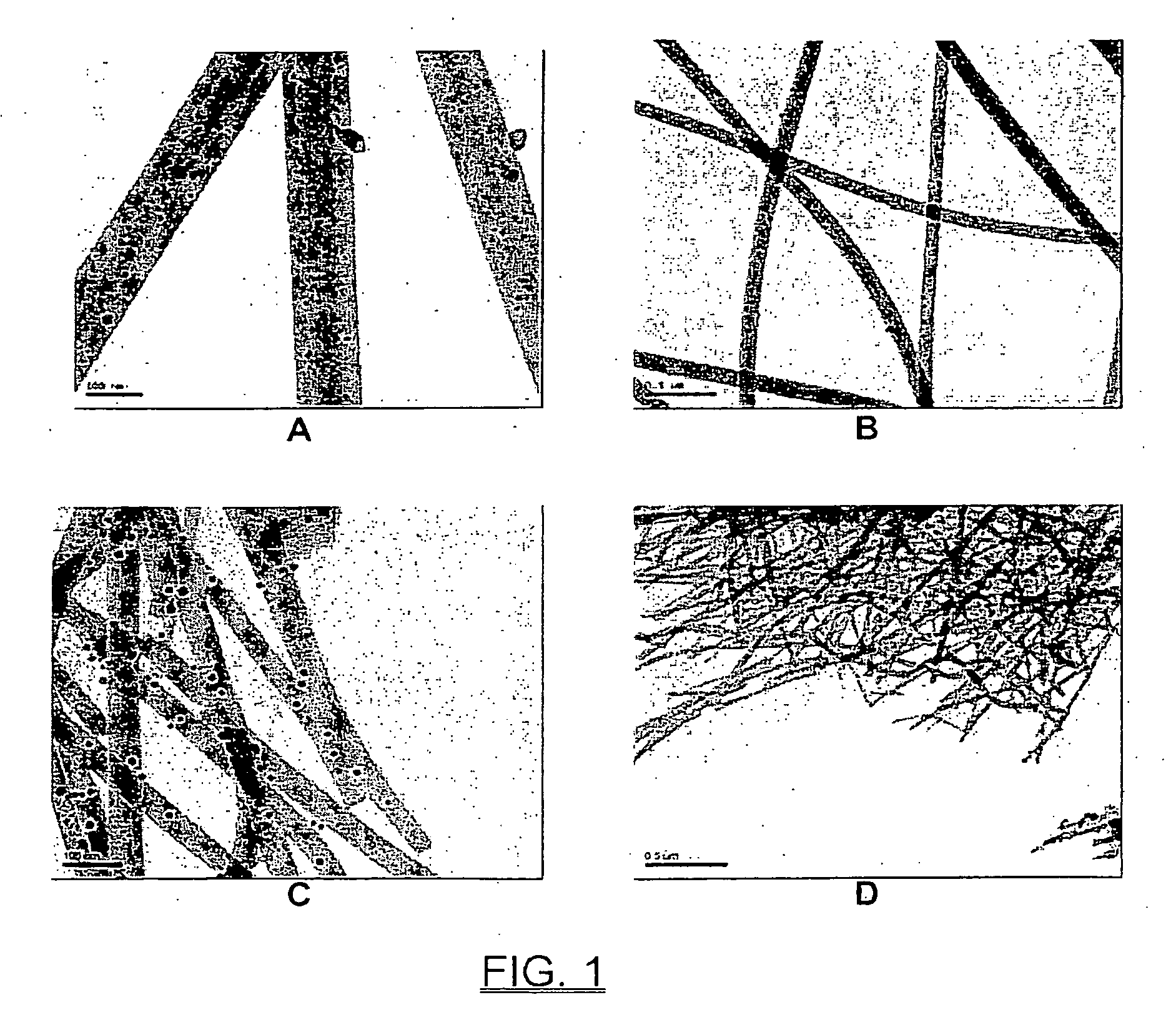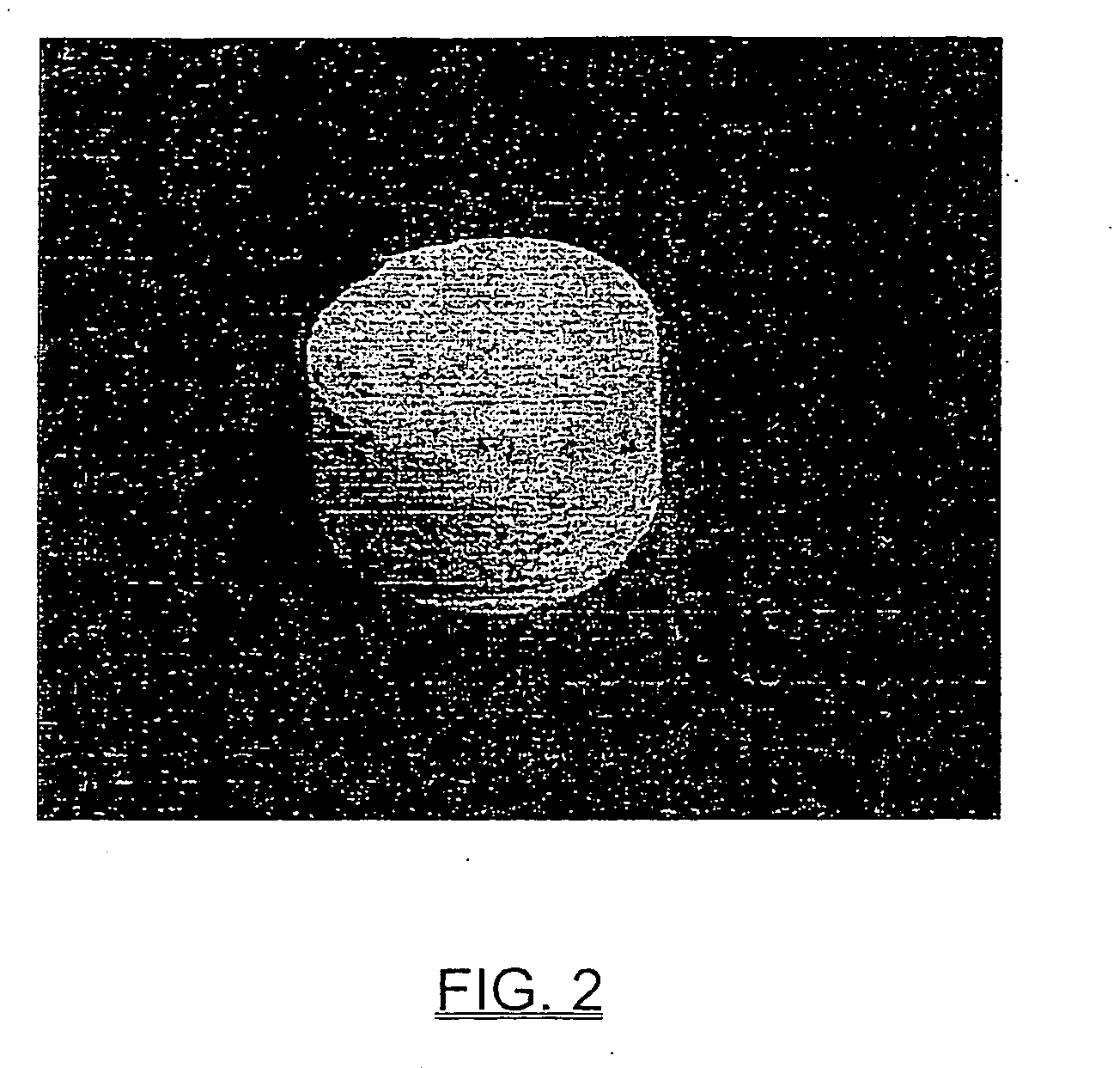Ceramic nanofibers containing nanosize metal catalyst particles and medium thereof
a metal catalyst and ceramic nanofiber technology, applied in the direction of catalyst activation/preparation, metal/metal-oxide/metal-hydroxide catalysts, etc., can solve the problems of affecting processing efficiency, affecting reaction products, damage to processing equipment, etc., and achieves low pressure drop, high porosity, and high temperature resistance
- Summary
- Abstract
- Description
- Claims
- Application Information
AI Technical Summary
Benefits of technology
Problems solved by technology
Method used
Image
Examples
example 1
[0091]The following examples relate to the effects of NO decomposition with respect to varying the inlet NO concentration.
[0092]A test was conducted without any samples (filter) at a flow rate of 1 cc / min for both the NO and CO gases to study the effect of temperature on the experiment. There was no change in the concentration of NO and CO. When the temperature was changed from room temperature up to 350° C., nitrogen, carbon dioxide and nitrous gases were formed showing a reaction may occur at elevated temperatures. The results of the test (blank test) are shown in FIG. 5.1. Here the concentration (ppm) is volume to volume ratio (v / v).
[0093]The catalytic filter media, which contained a constant amount of catalyst of 0.053 g palladium doped on the alumina nanofibers (92 wt % Pd respect to Al2O3) with 0.5 g of alumina microfibers, were tested for NO—CO reaction. The flow rate of nitric oxide was varied from 0.3 cm3 / min to about 1.5 cm3 / min while carbon monoxide flow was kept constant...
example 2
[0113]Variation of the amount of the palladium catalysts.
[0114]The amounts of palladium catalyst doped alumina nanofiber were varied in the filters and the filters were tested at constant reactant flow rates of 1 cm3 / min for both NO and CO gases. The effect of variation in catalyst amount was tested by keeping the concentration of NO around 18,000 ppm while the concentration of CO was around 20,000 ppm. The total amount of nanofiber (palladium +alumina nanofiber) was varied from 0.001 to 0.10 gm per filter sample with constant amount of microfibers. The detail conditions are shown in Table 2. FIG. 5.6 to FIG. 5.8 show the results of NO—CO reaction at 0.001 / g, 0.01 / g, and 0.1 / g of palladium oxide doped on the alumina nanofibers. The result for the palladium doped alumina nanofibers at 0.053 g was shown in FIG. 5.4. At higher catalyst concentration, nitric oxide was completely reacted at lower temperatures and the start temperature for the decomposition was also lower.
TABLE 2Test cond...
example 3
[0115]Reaction on Platinum Catalysts
[0116]Effect of NO Concentrations
[0117]The catalytic filter media that contained constant 0.053 / g of platinum doped on the alumina nanofibers (9.5 wt % Pt respect to Al2O3) with 0.5 / g of alumina microfibers were tested with nitric oxide flowed with changed flow rate from 0.3˜1.5 cm3 / min at constant carbon monoxide flow rate (1.0 cm3 / min). The reaction conditions are shown in Table 3 and calculations were done the same way as for palladium with but with the density of platinum being 21.45 kg / m3. FIG. 5.9 shows the concentration profile versus temperature. The concentrations of NO and CO were about the same as at room temperature until the reaction temperature reached about 150° C. At lower inlet nitric oxide concentration, the temperature for the entire nitric oxide reduction was lower. At the concentrations around 18,000 ppm of nitric oxide, the NO was completely reacted at 350° C., 300° C. for the experiments with inlet concentration of 7,500 ppm...
PUM
| Property | Measurement | Unit |
|---|---|---|
| Temperature | aaaaa | aaaaa |
| Temperature | aaaaa | aaaaa |
| Length | aaaaa | aaaaa |
Abstract
Description
Claims
Application Information
 Login to View More
Login to View More - R&D
- Intellectual Property
- Life Sciences
- Materials
- Tech Scout
- Unparalleled Data Quality
- Higher Quality Content
- 60% Fewer Hallucinations
Browse by: Latest US Patents, China's latest patents, Technical Efficacy Thesaurus, Application Domain, Technology Topic, Popular Technical Reports.
© 2025 PatSnap. All rights reserved.Legal|Privacy policy|Modern Slavery Act Transparency Statement|Sitemap|About US| Contact US: help@patsnap.com



